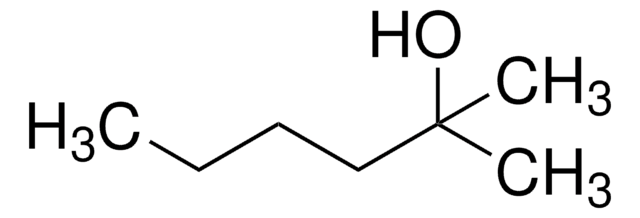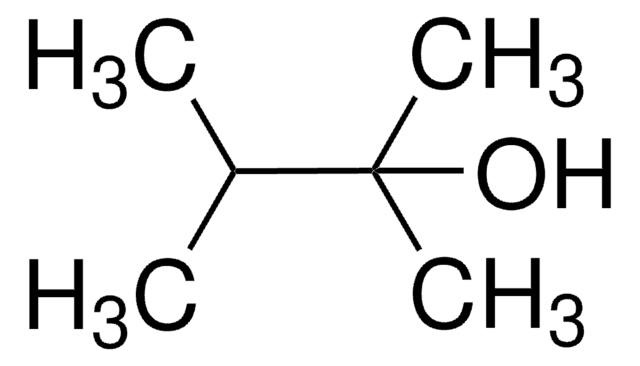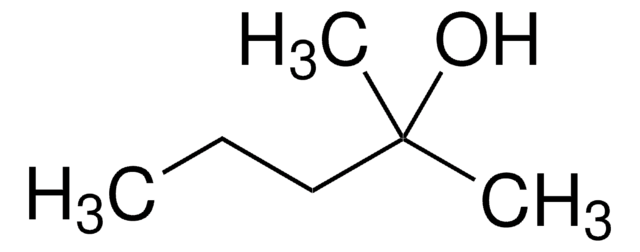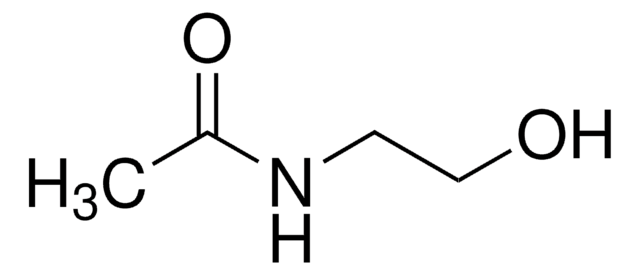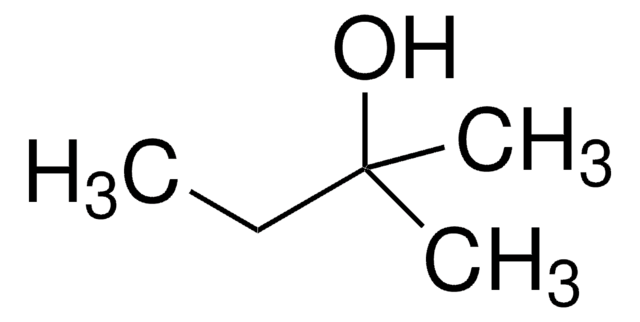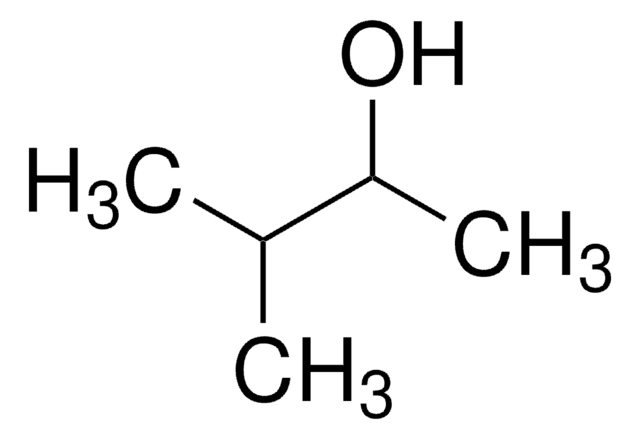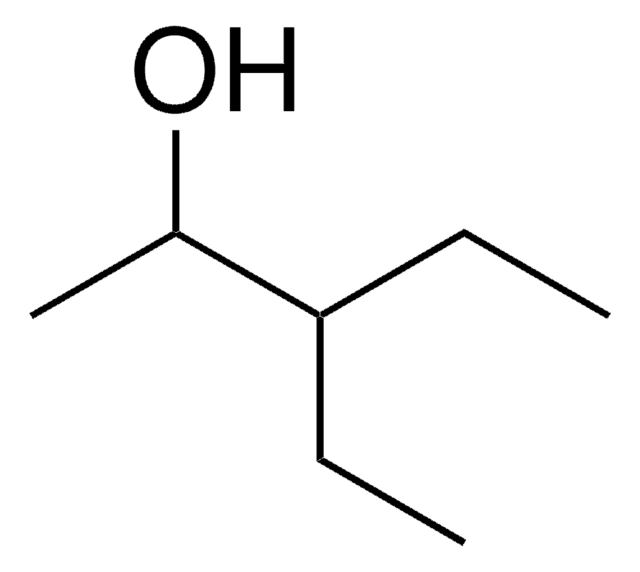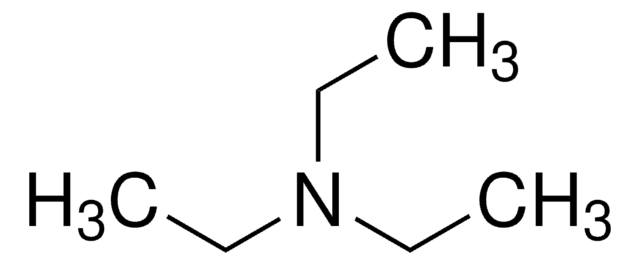111570
3-Ethyl-3-pentanol
98%
Synonym(s):
Triethylcarbinol
Sign Into View Organizational & Contract Pricing
All Photos(2)
About This Item
Linear Formula:
(C2H5)3COH
CAS Number:
Molecular Weight:
116.20
Beilstein:
1731643
EC Number:
MDL number:
UNSPSC Code:
12352100
PubChem Substance ID:
NACRES:
NA.22
Recommended Products
Quality Level
Assay
98%
refractive index
n20/D 1.430 (lit.)
bp
141 °C/743 mmHg (lit.)
density
0.824 g/mL at 25 °C (lit.)
functional group
hydroxyl
SMILES string
CCC(O)(CC)CC
InChI
1S/C7H16O/c1-4-7(8,5-2)6-3/h8H,4-6H2,1-3H3
InChI key
XKIRHOWVQWCYBT-UHFFFAOYSA-N
Looking for similar products? Visit Product Comparison Guide
Application
3-Ethyl-3-pentanol was used to study the effect of alkanols on the micropolarity and microviscosity of the head group region, in the reverse micelles of AOT-heptane-water by fluorescence probing. 3-Ethyl-3-pentanols were encapsulated in the hexamers of resorcin[4]arenes.
Signal Word
Warning
Hazard Statements
Precautionary Statements
Hazard Classifications
Flam. Liq. 3
Storage Class Code
3 - Flammable liquids
WGK
WGK 3
Flash Point(F)
100.4 °F - closed cup
Flash Point(C)
38 °C - closed cup
Personal Protective Equipment
dust mask type N95 (US), Eyeshields, Gloves
Regulatory Information
危险化学品
Choose from one of the most recent versions:
Already Own This Product?
Find documentation for the products that you have recently purchased in the Document Library.
Raymond Behrendt et al.
Journal of peptide science : an official publication of the European Peptide Society, 21(8), 680-687 (2015-06-17)
Obtaining homogenous aspartyl-containing peptides via Fmoc/tBu chemistry is often an insurmountable obstacle. A generic solution for this issue utilising an optimised side-chain protection strategy that minimises aspartimide formation would therefore be most desirable. To this end, we developed the following
Sarit Slovak et al.
Chemistry (Weinheim an der Bergstrasse, Germany), 18(27), 8515-8520 (2012-05-29)
After more than a century of research on resorcin[4]arenes (1) it is clear that such systems form spontaneously [1(6)(H(2)O)(8)]-type hexameric capsules in wet, non-polar, organic solvents. However, the interactions of these hexameric capsules with alcohols are far from being solved.
Elsa Abuin et al.
Journal of colloid and interface science, 258(2), 363-366 (2003-03-06)
The effects of addition of alkanols (ethanol, n-hexanol, and 3-ethyl-3-pentanol) on the micropolarity and microviscosity of the head group region in reverse micelles of AOT-heptane-water have been investigated by fluorescence probing methods (ANS fluorescence yield and TMADPH fluorescence anisotropy), complemented
Our team of scientists has experience in all areas of research including Life Science, Material Science, Chemical Synthesis, Chromatography, Analytical and many others.
Contact Technical Service